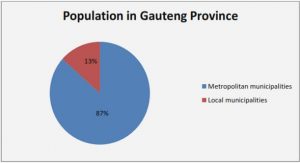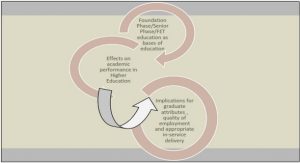Get Complete Project Material File(s) Now! »
The Background regarding Ps 118
As with many of the psalms, when and under what circumstances Ps 118 was composed remain matters of scholarly controversy. The majority view today is that it was composed in the post-exilic era and represents a liturgy for a festival of thanksgiving (Kraus, 1989:395). Ps 118 belongs to one of the Hallel20 Psalms21, i.e. those specifically designed for festivals and pilgrimages (West, 1981:440). Especially Hallel Psalms 113118 as a unit is called the so-called “Egyptian Hallel” since they recount the saving deeds of Yahweh during the Exodus from Egypt under the leadership of Moses (to whom the authorship of these psalms was traditionally attributed) (Swanson, 1992:30). And so they were customarily related to the Passover (Schaefer, 2001:288). The Hallel was first sung at the Feast of the Lights (or, Hanukkah) − particularly relating to the addition of v 27 in Ps 118 which states Yahweh is God, he is our light. The liturgical use of Ps 118 was later extended to the three great festivals of Passover, Pentecost and Tabernacles (De Vaux, 1980:512). Ps 118 is a bridge psalm. It not only forms the conclusion of the Egyptian Hallel group of Psalms, but also belongs to the opening of the Great Hallel, consisting of Ps 118-136. In order to understand the modified meaning of Ps 118 in early Christianity, it is important to examine the original significance of Ps 118. As the study will show below, since Ps 118:22, 25, 26 are among the most quoted verses in the NT, attention will be paid to the interpretation of those phrases.
The History of the feast of Passover
In the OT, passages mentioning this festival are: Ex 12–13; 23:15 and 34:18, parts of the two cultic calendars; Lv 23:4-8; Nm 9:1-15; 28:16-25; and 33:3; Dt 16:1-8; Js 5:10-15; 2 Ki 23:10-14; Ezk 45:21; Ezr 6:19-22; 2 Chr 30:1-27; 35:1-9 (Bokser, 1992:756). Ex 12-13 introduces the historical background of Passover. Lv 23, Nm 28 and Dt 16 explicate the procedures in the celebration of Passover. Nm 9, Js 5, 2 Ch 30 and 35, 2 Ki 23 and Ezr 6:19-22 are historical texts that relate the commemoration of a particular Passover (Harris, Archer and Waltke, 1980:728). Several works of the Second Temple period mention the Feast of Passover. The book of Jubilees contains the Festival tradition in Jub 49. Expanding on remarks in Ex 12 concerning the protective aspect of the offering, Jubilees asserts that those who observe the Passover will be free from plague in the next year. It thus applies the message of Passover to the people’s future in terms other than those of national independence. The Passover was to function until the final Jubilee, when complete redemption was expected (Bokser, 1992:757). Strangely, Jub 49 does not mention the unleavened bread or the bitter herbs, both of which were prominent at the Passover meal. Instead, it has the first allusion to wine, which became prominent at the Seder. It is likely that the introduction of wine at the Passover meal was the effect of a radical change that was taking place in the character of the Passover. It was no longer a solemn annual gathering of male adults; it was to become the occasion for family celebration, in which the drinking of wine found a natural place (Segal, 1963:231-32).
Ezekiel the Tragedian vividly depicts the preparations of the night before the Exodus in his repetition and expansion of Ex 12–13. It mentions the time in the evening to slaughter and eat the offering, and notes the accompanying preparations. Here, it contains two sets of teachings for the future: eating the unleavened bread for seven days in remembrance of the seven-day journey from Egypt to the Red Sea where the Israelites attained final liberation; and the offering of firstborn animals to recall God’s deliverance of the Israelite firstborn in Egypt (Ezk.Trag 152-92). Hence, like Jubilees, Ezekiel the Tragedian shows an interest in demonstrating the link between the rite and what took place during the Exodus (Bokser, 1992: 761). Remarks on Passover in Ezk.Trag 188-92 reflect a widespread connection of the Feast with a future hope of deliverance because the phrases “going forth” and “it being the first of months” often appear in rabbinic eschatological thought (Brunson, 2003:69-70). Two scrolls found at Qumran also mention the two festivals. The Qumran Festival Calendar from Cave 4 (4Q509) relates the Passover regulations of Lv 23 and Nm 9:13 with the pure solar calendar of 364 days. According to this calendar, the Seder meal on the evening of the 14th day of the first month always corresponds to a Tuesday and the first day of the feast on the 15th day of the first month always to a Wednesday (Otto, 2003:23). The Temple Scroll (11QTemple) explicitly mentions the Passover sacrifice (17:6-9) and the Festival of Unleavened Bread (17:10-16) (Bokser, 1992: 761). 11QTemple corresponds with Jub 49 in some ways. Firstly, the Passover meal must be taken in the courtyards of the sanctuary (11QTemple 17:9; Jub 49:16-20). Secondly, the age regulation of twenty years for participants (11QTemple 17:8) agrees with Jub 49:17. The stipulations for the Feast of Unleavened Bread in 11QTemple follow Jub 49:22-23 (Otto, 2003:24).
Chapter 1 Introduction
1.1. Problem statement
1.2. Hypothesis
1.3. Methodology
1.4. Research history
1.5. Structure and Presentation
Chapter 2 The Tradition-Historical Aspect of Ps 118
2.1. Introduction
2.2. Exegetical analysis of Ps 118
2.3. Ps 118 and the Jewish Feasts
2.4. Ps 118 in the Jewish and early Christian traditions
Chapter 3 The Hermeneutical Aspect of the Ps 118 quotations
3.1. Introduction
3.2. The continuing Exile and the New Exodus
3.3. Mark
3.4. Summary
Chapter 4 Matthew
4.1. The General Context of Matthew
4.2. The Ps 118 quotations and allusions in Matthew
4.3. Summary
Chapter 5 Luke-Acts
5.1. The General Context of Luke-Acts
5.2. The Ps 118 quotations and allusions in Luke-Acts
5.3. Summary
Chapter 6 John
6.1. Introduction
6.2. The General Context of John
6.3. The Ps 118 quotations and allusions in John
6.4. Summary
Chapter 7 The Pauline Epistles
7.1. The General Context of the Pauline Epistles
7.2. The Ps 118 allusions in the Pauline Epistles
7.3. Summary
Chapter 8 The General Epistles
8.1. Hebrews
8.2. 1 Peter
8.3. Summary
Chapter 9 Conclusion
9.1. The Tradition-historical Aspect of the Study
9.2. The Hermeneutical Aspect of the Study – A “New Exodus Motif”
9.3. Conclusion 280






